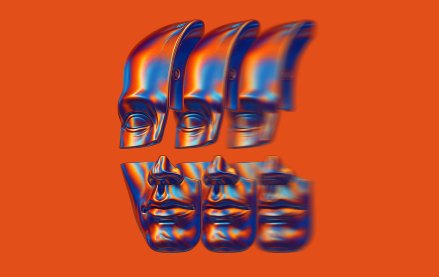Save 50% on a 3-month Digiday+ membership. Ends Dec 12.
Why the ad industry is redefining what it means to be a creator vs. influencer

As a Digiday+ member, you were able to access this article early through the Digiday+ Story Preview email. See other exclusives or manage your account.This article was provided as an exclusive preview for Digiday+ members, who were able to access it early. Check out the other features included with Digiday+ to help you stay ahead
The ad industry and the creator economy are constantly debating the difference in terms between creators and influencers.
As the industry evolves and takes up a bigger slice of the marketing pie, there are now more ways to differentiate between the two types of talent — one term seen as a more premium way of marketing, and the other focusing more broadly on creating content across different platforms. There’s perhaps a need for more clarification and updating too, as the types of content grow across channels, from artificial intelligence to virtual avatars.
(Another way of looking at the distinction falls along performance marketing versus branding creators.)
Let’s dive more into specific types of creators and influencers — and some of the sub-categories of both groups.
Defining the type of influencer and creator
“The output from creators and influencers aren’t always interchangeable,” said Ana Arnet, head of influencer and affiliate at Wpromote.
“Brands leverage creators for their ability to produce original, platform-native content that feels more authentic, building brand awareness,” said Arnet. “Influencers, on the other hand, can offer elements of that, but it’s the access to a pre-built audience that makes them ideal for driving immediate impact.”
Some also believe the term “influencer” is becoming outdated as many creators build businesses beyond making social media content. Others think the definition comes down to how the creator or influencer and brand interacts with their audience. The terms often get conflated and confused — and sometimes it just depends on who you ask.
“While [the term influencer] was once accurate to describe individuals sharing their personal lives and subtly influencing behavior, the landscape has significantly evolved,” said Becky Owen, global CMO at influencer agency Billion Dollar Boy.
Owen lists three key categories of these digital natives: influencers, creators and makers. Influencers build their audience with their personality and content on platforms like TikTok and Instagram, while creators “blend their personal brand with exceptional production skills” often on Instagram Reels with different digital content that includes animation or art. Makers represent an emerging category that uses innovative technology to create virtual or AI influencers, and experiment with AR and other 3D designs in their content.
Strategy is a consideration
The way that brands and agencies use either term also often comes down to the content strategy behind the effort. Zac Hunter, public relations manager of integrated agency Vladimir Jones, uses influencer broadly with clients — but distinguishes it into levels of nano, micro, macro and celebrity. “This tiered approach allows us to craft comprehensive influencer strategies that work across event activations and campaigns,” Hunter said.
For example, the agency could use “a celebrity spokesperson, a community organizer and a musician with 350,000 Instagram followers within a single unified influencer strategy.”
Amy Luca, global head of social at Monks, similarly noted a different strategy for creators and influencers. Influencers, which are more in line with an older model, embody a pay-to-play and transactional endeavor, whereas creators tend to focus on creative ideation, collaboration and could be in-house at the company, Luca explained. Creators can be more expensive than influencers in this case, but that can depend on the one-off or long-term partnership and the terms.
“Everyone’s a creator that makes content,” Luca told Digiday, adding that creators don’t always post in their own feeds — but influencers typically always post to their audience.
Luca also emphasized Monks’ approach in building brands on social media, not just promoting a product — which is a more short-term strategy. Because so much work goes into content creation, “to not get any brand value out of it is a waste,” Luca said.
AI distinction
What can further blur the terms sometimes is the emergence of AI avatars and virtual influencers. Are they still considered creators or influencers, and does it depend on who made it?
“Influencer marketing is one of the few digital marketing channels that does not center around a designer or an advertiser, but rather a person,” said Nate Harris, vp of product innovation at creator marketing platform CreatorIQ. “This distinction grows to be more important as AI influencers emerge in the marketplace.”
Harris insists that AI influencers cannot be creators, since AI “is made by the industry [and] must wear the industry term.” AI influencers simply aren’t human, and it can appear “contrived” if their content tries to look like it’s made by a person.
Regardless of which term is used, what remains clear is that the industry views creators and influencers differently — and will continue to build on those distinctions.
More in Marketing

Agencies push curation upstream, reclaiming control of the programmatic bidstream
Curation spent much of this year in a fog, loosely defined and inconsistently applied. Agencies say they plan to tighten the screws in 2026.

‘A trader won’t need to leave our platform’: PMG builds its own CTV buying platform
The platform, called Alli Buyer Cloud, sits inside PMG’s broader operating system Alli. It’s currently in alpha testing with three clients.

Why 2026 could be Snap’s biggest year yet – according to one exec
Snap’s senior director of product marketing, Abby Laursen talked to Digiday about its campaign automation plans for 2026.








